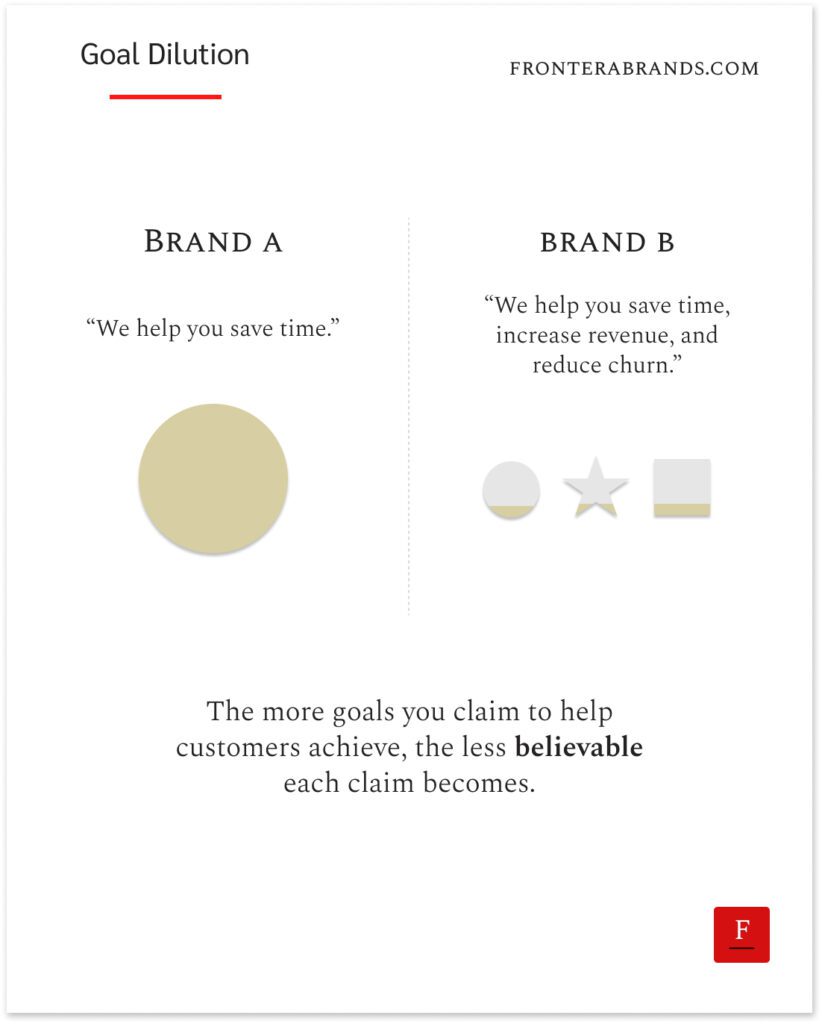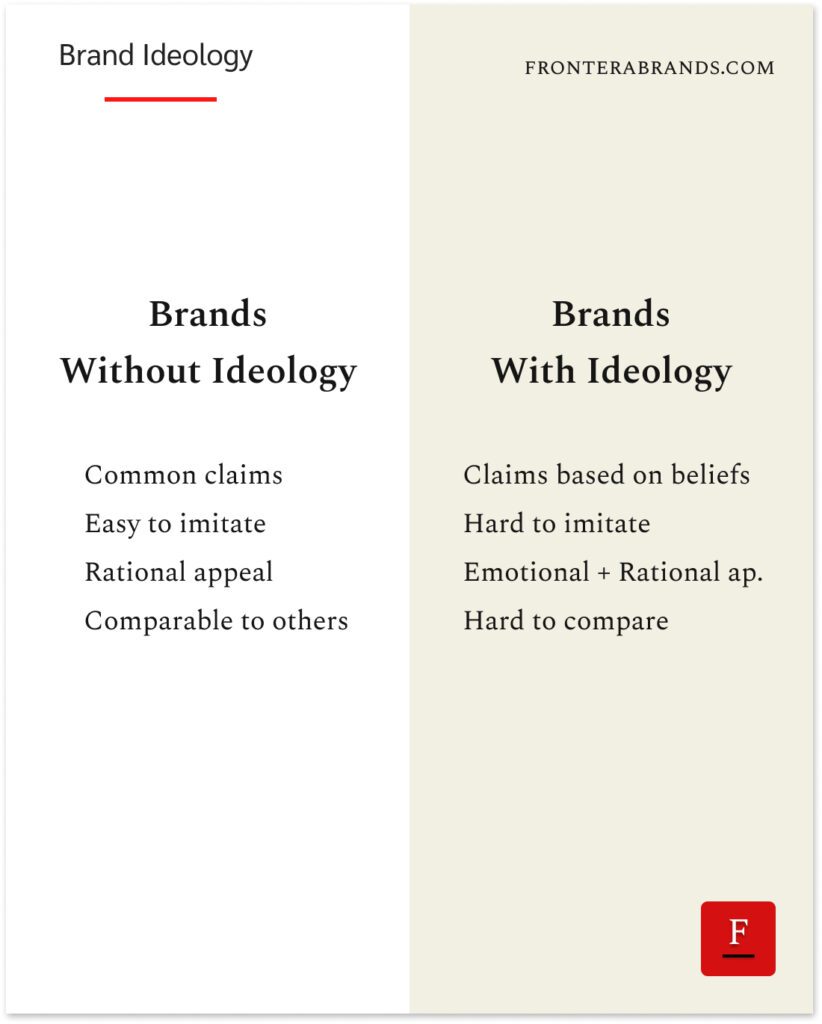♦️ 7 rules to build messaging that actually influences your buyers
|
Why do many B2B brands struggle to get their message across? Why is their value lost in translation? Here’s one reason. Many executives confuse messaging with copywriting. But messaging isn’t just about beautiful words. It’s about making decisions. It’s about clarity. Most B2B brands skip straight to copy and content, without building the structure beneath it. Hence their message becomes a soup of random ideas that disappear in the noise. For your messaging to be effective, it has to comply with these 7 rules: 1. There is no effective messaging without clear positioningYou know this. Positioning is choosing a frame for your brand by finding the right problem to solve, the right clients to solve it for, and how you’ll solve it differently. Messaging is what you’ll say to bring that frame to the market. That’s why it’s impossible for your messaging to deliver results when the positioning is unclear. Because there is no direction for the message. How can you define what you’ll say if you don’t know who you’ll target and how you are different? So effective messaging is always born from positioning.
|
 |
3. Messages require repetition to get through
The previous point is about sending fewer messages to the market.
This one is about repeating them again and again.
The reason is the same.
Tell it once or twice, and they forget.
It’s not enough for buyers to associate those ideas with your brand.
There is a common marketing knowledge based on a study done back in the 1930s.
“Customers need to see a brand’s message 7 times before a purchase.”
Well, thanks to all the clutter, things are worse these days.
Buyers need to see your messages at least 30 times before buying.
Especially for high-value B2B services.
That’s why effective messaging repeats the same messages in different ways.
Because buyers need to see it dozens of times.
Here’s a concrete example.
One of Frontera’s brand messages is:
“Weak messaging causes your marketing channels to be ineffective.”
And we repeat this message in different ways through content to get it across:
 |
4. Problems resonate quicker than solutions
Human beings are selfish by nature.
Whenever they interact with a new brand, they’d like to know what’s in it for them.
They care about how everything can fit into their lives.
And that’s why messaging about their problems resonates quicker than messaging about your solutions.
That’s why effective messaging leads with buyers’ problems.
Your solution to those problems comes later.
If you directly lead with a solution, you make them think: “But how does all this fit into my life?”
And that question is enough to lose a potential client.
So effective messaging agitates buyers’ problems in top-of-the-funnel messages to resonate quicker.
And it introduces solutions gradually as they progress in their buying journey.
5. An enemy is a shortcut to convey a message
You’ve probably heard of this saying in some superhero movies:
“Your enemies define you.”
This works for messaging too.
Because when you have a villain to fight, it’s easier for people to understand your message.
It draws clear lines:
“This is our enemy, and we stand against what they stand for.”
That’s why it’s useful to choose a well-known enemy.
We talked about Avis’s counter-positioning against market leader Hertz and T-Mobile’s Un-carrier move.
7UP called itself “The Uncola” to counter-position against Coca-Cola.
But the enemy doesn’t even need to be a single competitor.
It can be customers’ existing way of doing things (e.g., Slack vs email).
Or a problem in your industry (e.g, Big Four using 23-year-old consultants to advise C-suites).
So effective messaging chooses an enemy that represents clients’ problems.
It builds a narrative around it.
It uses the negative to explain the positive.
 |
6. Effective messaging follows the clients’ language
This is something I hear from some of our clients when they come to us.
They use certain words to describe what they offer, their difference, and market category.
But those words confuse their buyers.
From the buyers’ perspective, what that business offers is something else.
Hence, they describe everything with different words.
So every sales call requires a lot of explanations to get over this barrier.
Buyers need an “aha” moment to understand what everything is about.
But this creates a big problem.
Because sometimes that “aha” moment never happens on sales calls.
Plus, many confused buyers drop out before, as the brand’s website and content use a foreign language for them.
That’s why effective messaging doesn’t fight with buyers.
It aligns with their world.
It uses the words they use to remove every little objection.
7. Ideology makes it memorable
One thing is to make your messaging clear.
The other thing is to make it sticky.
So clients not only understand the message, but they also believe in it, remember it, and share it.
That’s only possible if you have a strong brand ideology.
Because an ideology allows you to resonate with buyers on an emotional level.
You give them something beyond a product or service.
Something that can become part of their identity.
So effective messaging gives meaning to offers through a clear point of view.
 |
–
You put all that work into your products and services.
You have expertise.
And your business creates a lot of value for your clients.
Great.
But after doing all that, don’t lose the battle at the last mile by ignoring how to communicate that value.
Because your messaging creates their perception.
And that perception shapes their buying decisions.
So go through this list.
Spot the rules you’re ignoring and fix them.
Remember.
For potential clients, your value is as good as you communicate it.
"We’re great at what we do. We just don’t know how to express our real value on our site."
The result?
Confused prospects.
And confused prospects don’t buy.
They scroll. They bounce. They forget.
We help B2B brands find what makes them different and say it in a way that makes buyers think: “This is exactly what we need.”
So your website and content don’t just sound better — they sell.
Want to stop losing sales to weak messaging?
Fill out this form, let's chat.
Thank you for reading this edition of How Brands Win.
You can reply to this email with your thoughts and feedback. I'd be happy to hear from you — I read and reply to all messages.
And you can connect with me here on LinkedIn.
Have a great day.
Ozan
Founder - Frontera
|
Frontera
Join 10,000+ B2B founders getting the strategies of iconic brands.
Every business has dozens of problems at any given time. Even thriving ones. A new regulation comes up and you have to comply. You have to hire but can’t find the right candidate. Or your clients churn and you have to find out why. Being in business means dealing with problems. It’s the same for your potential clients. The problem your firm claims to solve is among a huge list of problems your buyers have. They have limited time and resources. But many problems to solve. So how do they decide...
The biggest mistake in B2B messaging is copying consumer brands. I know. Who doesn’t want to be inspirational like Nike? Who doesn’t want to influence buyers with a strong mission like Patagonia’s? But think about it. These are consumer brands. They sell commoditized products. A jacket is a jacket. No matter what brand you buy from, the product functionally does the same thing. So to differentiate themselves, consumer brands have to give intangible meaning to their tangible products. They...
In 1970, Listerine’s marketing department was feeling the heat. P&G had launched a new mouthwash brand as a competitor a few years before. They called it Scope. And they attacked Listerine’s obvious weakness — taste. Listerine burned like medicine. Consumers knew it. So Scope entered the market using taste as its differentiator. They claimed a mouthwash didn’t have to taste bad. And they were quickly gaining market share with aggressive ad campaigns. “Scope fights bad breath without giving...



